For many people, the onset of chilly weather and frosty mornings means but one thing, ski season has arrived! If you’re heading down to the slopes this season it’s important that you properly prepare yourself for the physical impact of the sport.
Due to high intensity nature of skiing/snowboarding and the unpredictable conditions, preventing skiing injuries can be difficult. It can be nearly impossible to prevent someone else crashing into you or having a simple fall. Even low impact falls can cause potentially large injuries, sometimes it’s just bad luck.
So what are the most common ski injuries?
ACL tear/rupture
- The anterior cruciate ligament is one of the internal knee ligaments which is vital for knee stability
- Occurs when the skier is in the ‘sitting’ position – knees bent and leg rotation
- Also occur with knee hyperextension or when a beginner skier falls and their bindings do not release
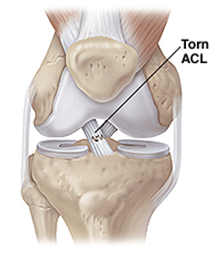
Shoulder dislocation
- The shoulder is a ball in socket joint and dislocation occurs when the ball (humerus) gets forced out of the socket (clavicle and scapula)
- Often the shoulder can sublux, where the humerus ‘pops out’ but goes back into place on its own
- Most commonly occurs from falls with an arm outstretched or directly crashing into an object where the arm is pulled backwards
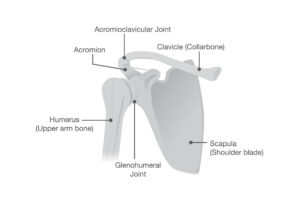
Skiers thumb
- Tearing of the ulnar collateral ligament of the thumb
- Caused by an extreme force to the thumb in an abducted (pulled sideways) and extended (pulled backwards) position, often from landing from a fall holding ski poles.
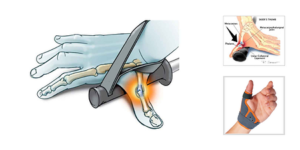
Fractures (wrist, clavicle)
- Often occur from falling onto an outstretch arm or being hit by another skier
- High impact falls are more likely to result in fractures however low impact falls can still cause fractures if landing at the wrong angle
So can you actually do anything to prevent snow sports injuries?
Well, the best way to prevent injury is preparation. Follow these steps for the best chance at preventing cutting your holiday short!
Strength
- Upper limb strength for pushing off using stocks – triceps dips
- Leg strength and endurance for knee control and getting down those steep hills – quadriceps
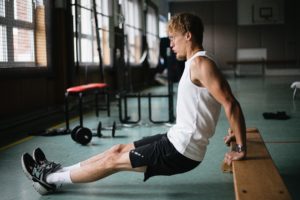
Double leg squats
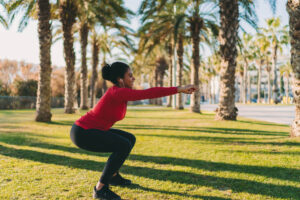
Single leg squats
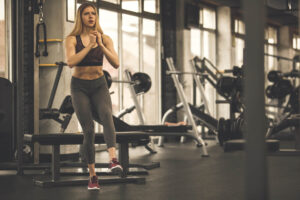
Wall sit (endurance)
- Hip and knee control during turns and moguls – gluteals
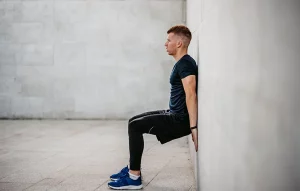
Wall Sits: Helpful Tips and Benefits – NASM
Crab walking
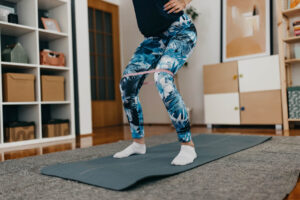
Balance and proprioception
- Skiing requires a high level of balance to maintain control during turns and landing jumps
- Jumping, moguls and impact landing requires good shock absorption through the lower limb
Jump and landing on a soft surface
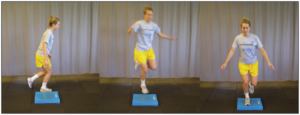
Image source.
Jumping side to side
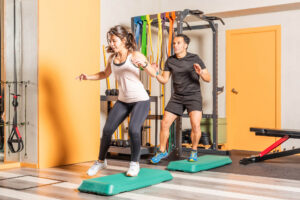
Bosu squats/lunges
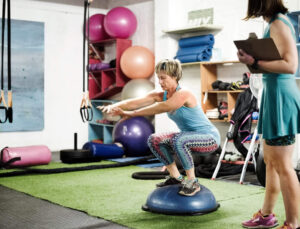
Ski/snowboard fitting and equipment
- Make sure all equipment is in good working order with no faults
- Ensure boots, bindings, board and skis are fitted according to your ability – for example, if you’re a beginner make sure you ski bindings are set accordingly or if you fall over then won’t release your boot
Wearing appropriate protective gear
- Helmets
- Goggles
- Wrist guards – most common upper limb injury is a fractured wrist from falling on an outstretched hand, these are very preventable!
Ski within your means and stay in control
- Conditions and terrain can change rapidly so be sure to only ski according to your ability
- Avoid losing control by going too fast
- Ski with other people in case of emergency
- Know how to get on/off lifts

